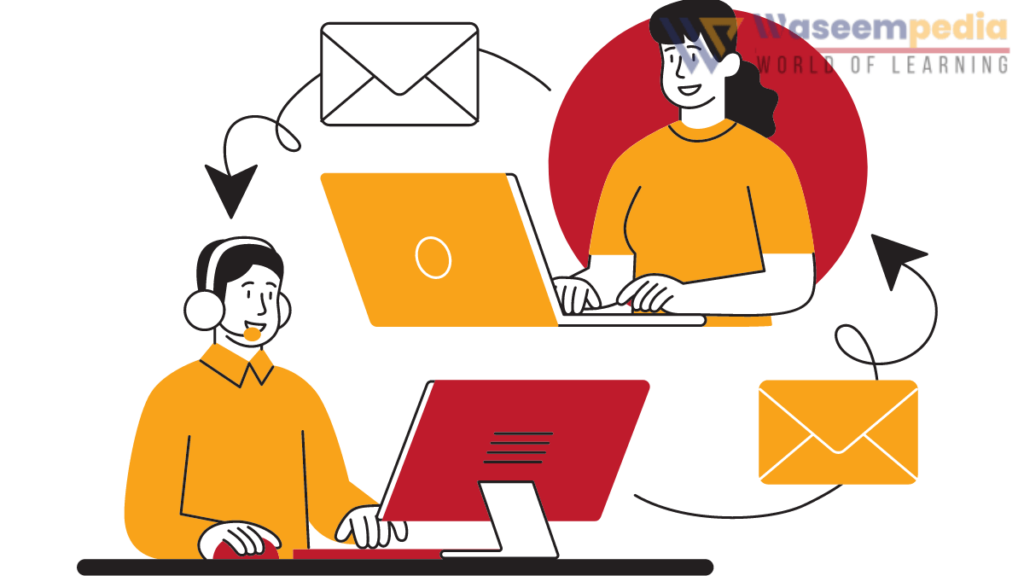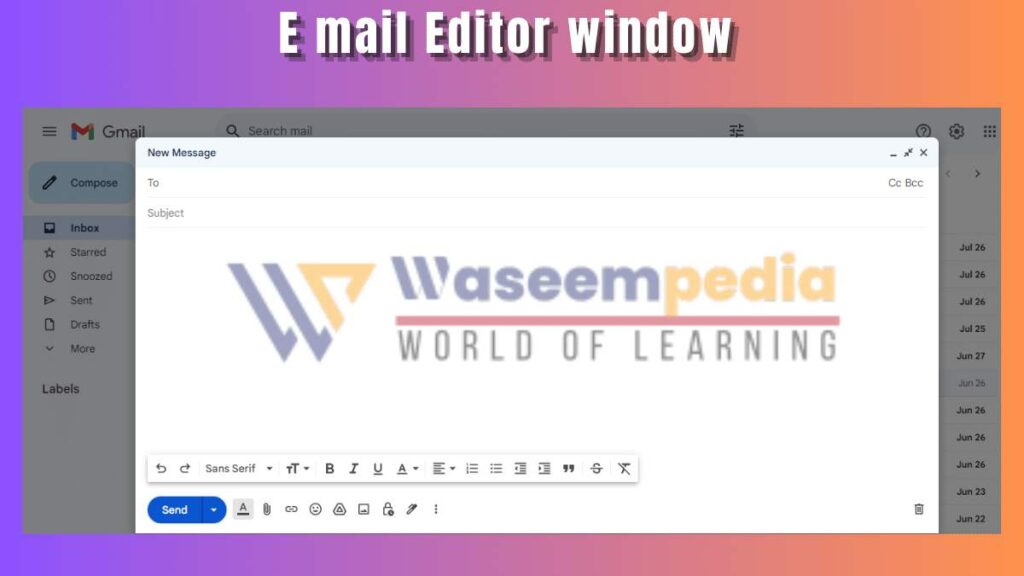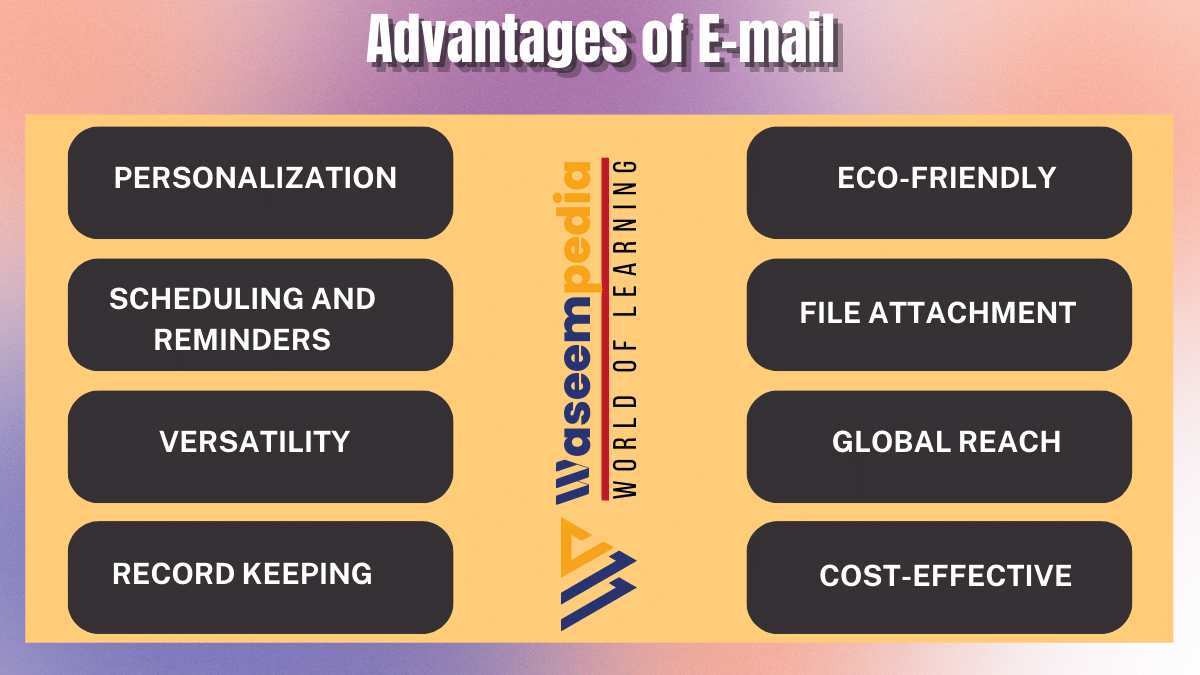Email having many advantages like speed, cost-effectiveness, convenience, record-keeping capabilities, global reach, versatility, Email automation, file sharing attachment options, scheduling features, eco-friendliness, and personalization options make it an indispensable tool in both personal and professional settings.

Email has revolutionized the way we communicate in the modern world. With its convenience, speed, and versatility, it has become an indispensable tool for personal and professional communication. In this article, we will explore the numerous advantages of email and how it has transformed the way we connect with others.
In today’s digital age, email has become an integral part of our lives. It allows us to send and receive messages, documents, and media files instantaneously, transcending geographical barriers. Let’s delve into the advantages that make email an essential communication tool.
what is an email E-mail
Before we discuss the advantages of email, let’s define what it is. Email, short for electronic mail, refers to the transmission of messages and data through electronic means over the internet. It involves composing, sending, and receiving messages electronically, making it a convenient alternative to traditional mail.

History of E-mail
Email has a rich history that dates back to the 1960s when it was first developed. It has evolved significantly since then, undergoing various technological advancements and becoming a ubiquitous form of communication worldwide. Understanding its history provides insights into the advantages it offers today.
10 Advantages of E-mail
10 Advantages of E-mail are as following
1. Communication Speed
One of the primary advantages of email is its unmatched speed. With just a few clicks, you can send a message to anyone around the world, and it arrives in their inbox within seconds. This instant communication allows for quick decision-making, collaboration, and exchange of information.
2. Cost-Effective
Email is a cost-effective communication solution compared to traditional mail or telephone calls. Sending an email eliminates the need for postage fees, paper, envelopes, and other resources associated with physical mail. Additionally, long-distance calls can be replaced by email, saving significant expenses for businesses and individuals alike.
3. Convenience
Email provides unparalleled convenience. You can access your emails from any internet-connected device, such as smartphones, tablets, or computers. This accessibility allows you to stay connected and respond to messages at your convenience, irrespective of your location or time zone.
4. Record Keeping
Email serves as an excellent tool for record keeping. It provides a written trail of communication that can be stored and easily retrieved whenever needed. Unlike phone conversations or face-to-face meetings, email allows you to keep a detailed record of important discussions, agreements, and attachments for future reference.
5. Global Reach
With email, geographical boundaries become irrelevant. You can connect with individuals and businesses worldwide with ease. This global reach has revolutionized international business, enabling efficient communication, collaboration, and trade across different time zones and continents.
6. Versatility
Email offers versatility in communication. Along with text messages, you can send multimedia files, such as images, videos, and documents, directly through email. This flexibility allows for richer and more engaging communication, enhancing the overall quality of interactions.
7. File Attachment
One of the significant advantages of email is the ability to attach files. You can send documents, spreadsheets, presentations, and various other file formats as attachments within your emails. This feature simplifies sharing important files, eliminating the need for physical media or courier services.
8. Scheduling and Reminders
Email platforms often come with built-in calendar features, allowing you to schedule appointments, set reminders, and send event invitations. This integrated functionality enhances productivity, helping you stay organized and manage your time effectively.
9. Eco-Friendly
By opting for email over physical mail, you contribute to environmental sustainability. Email eliminates the need for paper, envelopes, and transportation associated with traditional mail. Reducing paper usage helps conserve natural resources and reduces carbon emissions, making email an eco-friendly communication option.
10. Personalization
Email allows for personalization in communication. You can tailor your messages to suit the recipient, addressing them by their name and adding a personal touch. This customization helps build stronger connections and fosters better relationships, whether it’s for professional networking or staying in touch with loved ones.
Related FAQ’s
What are the 10 advantages of email?
Email offers advantages like instant global communication, cost-effectiveness, 24/7 accessibility, efficient organization and searchability, a written record for reference, multimedia file sharing, worldwide connection, automation features, environmental friendliness, and easy scheduling. These features make it an indispensable tool in today’s communication landscape.
Is email more secure than traditional mail?
Email security depends on various factors, such as encryption measures and user practices. While email can be made secure with the right precautions, it’s essential to follow best practices like using strong passwords and avoiding suspicious email attachments or links
Can I send large files through email?
yes, email allows you to send large files by attaching them to your messages. However, there may be limitations on the maximum file size imposed by email service providers. In such cases, you can use file-sharing services or compress the files before sending
Are there any disadvantages to using email?
While email offers numerous advantages, it’s important to be aware of potential disadvantages. These can include spam emails, phishing attempts, email overload, and miscommunication due to the lack of non-verbal cues. However, with proper awareness and caution, these challenges can be mitigated.
Is email replacing traditional mail completely?
While email has significantly reduced the reliance on traditional mail, it hasn’t completely replaced it. Certain documents or formal correspondences may still require physical mail, but for everyday communication, email has become the preferred method due to its advantages.

